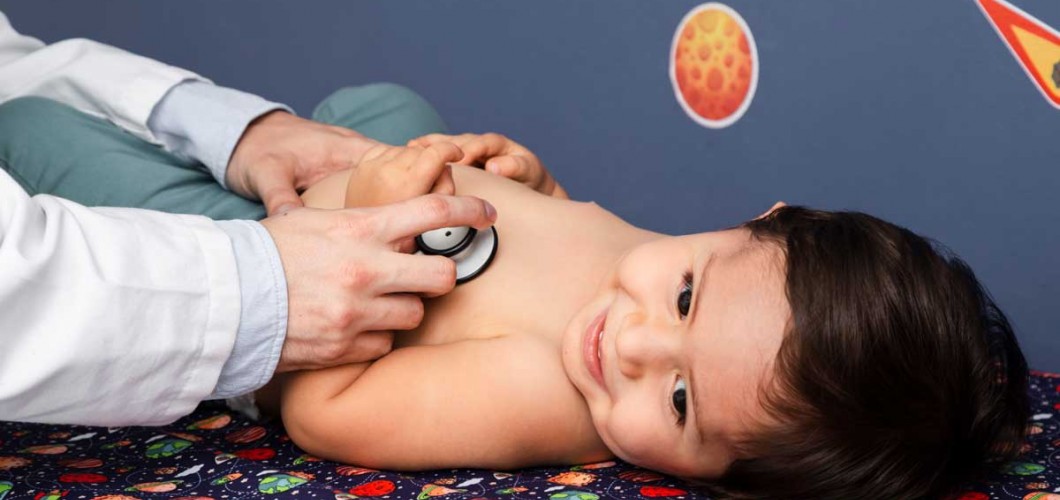
First Aid for Children: How to Perform a Safe Intervention?
Reading Time: 15 Minutes
Children are constantly active, curious, and exploring the world. Therefore, accidents, injuries, and health issues can be quite common for them. Parents, caregivers, or teachers having knowledge of first aid for children can make a life-saving difference in emergencies. First aid for children may differ from that for adults. In this article, we will provide detailed information on how to perform a safe first aid intervention for children, what to pay attention to, and which steps to follow in various situations.
1. Why Is First Aid for Children Important?
Children's bodies, immune systems, and physiological responses are different from those of adults. For this reason, the first aid procedures for children require different techniques and approaches compared to adults. Providing first aid for children can increase their chances of survival in an emergency and prevent an injury from worsening.
Children's bodies respond more sensitively to emergency situations, and without the right intervention, conditions can quickly deteriorate. Therefore, having the correct first aid knowledge for children is crucial, especially when facing sudden health problems or accidents.
2. Basic Rules to Follow in First Aid for Children
When providing first aid for children, there are some essential rules to keep in mind:
- Stay Calm: In an emergency involving a child, staying calm is crucial. The child can sense your calmness, which can help them cope with the situation.
- Call Emergency Services: In any accident involving a child, immediately call emergency services (112). The correct intervention before help arrives is crucial.
- Adapt to the Child's Needs: Children have more sensitive bodies, and their first aid treatment may differ from that of adults. The intervention must be tailored to the child's age and body size.
- Calm the Child: The child’s anxiety or panic can worsen the situation. It is important to calm them down to help them cope with the emergency.
3. Common First Aid Situations for Children and How to Handle Them
Below, we will discuss some common situations that require first aid in children and how to intervene appropriately.
3.1. Choking and Swallowing Incidents
Children, especially younger ones, often put small objects in their mouths and may swallow them. Swallowing can be very dangerous for a child.
- Choking: If a child is unable to breathe due to choking, immediately slap their back. Bend the child's head forward and give 5 back blows. If this does not work, perform the Heimlich maneuver. For young children, this maneuver involves pressing between the chest and abdomen.
- Swallowing: If the swallowed object does not cause choking, call for medical help immediately. Try to calm the child until help arrives.
3.2. Injuries and Bleeding
Children often get hurt or injured while playing outdoors. Bleeding and cuts are common health problems in these situations.
- Dealing with Injuries: Cover the injured area with a clean cloth or sterile bandage. Apply pressure to stop any bleeding.
- Fractures and Dislocations: If the child has broken bones or a dislocation, immobilize the broken area and seek immediate medical attention.
3.3. Heatstroke and Dehydration
Children who are exposed to hot weather for prolonged periods may suffer from heatstroke.
- In Heatstroke: Move the child to a cooler environment, cool their body, and encourage them to drink plenty of water.
- Dehydration: Signs of dehydration include dry skin, excessive thirst, and weakness. Provide the child with water and call emergency services.
3.4. Allergic Reactions
Children may have allergic reactions to food, insect stings, or medications.
- In the Case of an Allergic Reaction: If the child experiences swelling, skin redness, or difficulty breathing, administer an antihistamine if available, and call for emergency help.
3.5. Epilepsy and Seizures
Some children may experience seizures due to congenital conditions or illnesses. Ensuring their safety during a seizure is essential.
- In the Case of a Seizure: Lay the child down in a safe area, remove any hard objects around them, and protect their head. Once the seizure stops, immediately seek medical attention.
4. Other Considerations in First Aid for Children
- Age-Specific Intervention: The methods of first aid may vary depending on the child’s age group. The first aid for newborns is different from that for older children. It is essential to know the correct techniques for each age group.
- Training for Parents and Caregivers: Everyone involved with children should be trained in first aid. Having first aid training helps in providing the right intervention during emergencies.
5. Conclusion: First Aid for Children Saves Lives
First aid for children can make a life-saving difference when performed correctly. Accidents and health issues can occur at any time. Therefore, it is essential for parents and caregivers to have the correct first aid skills to ensure children's safety. Correct first aid interventions can prevent children from facing greater dangers and can save their lives.

Leave a Comment